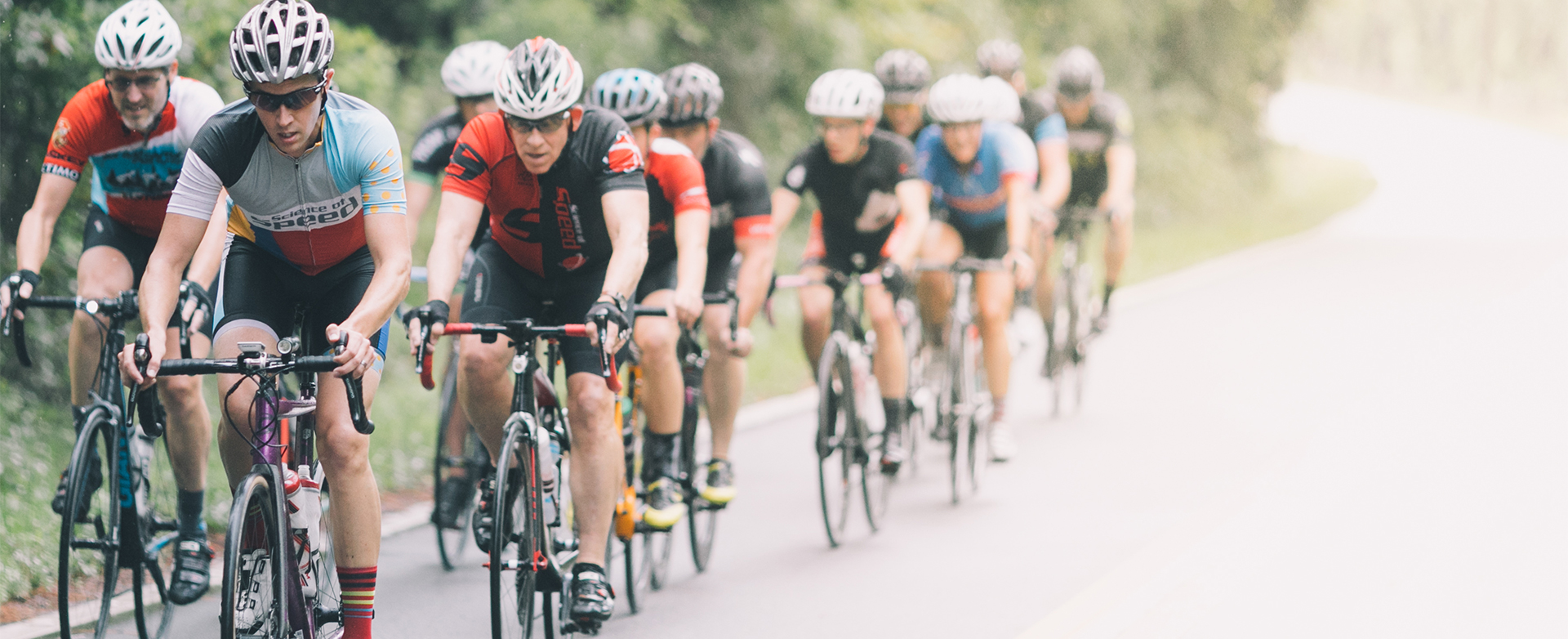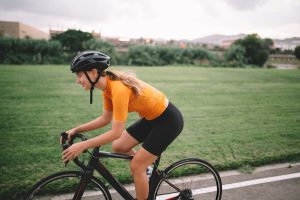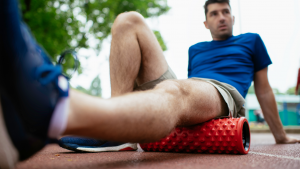No products in the cart.
Group Riding 301

When executed perfectly a paceline is not only a thing of beauty but a system of efficiency. Creating added speed when compared to any single rider and potentially less energy exertion. In group riding 101 and 201 we covered many of the key elements that make up the basic paceline and allow it to be fast and efficient.
In this article we are going to take it up another level in complexity as well as touch on one key adjustment made to the rotating paceline in a race situation.
The Kick Back
First thing is first. So, let’s touch on a key area that sounds so simple but can, and does, lead to many close calls and accidents in the group. Standing up! Yep, the simple act of getting out of the saddle, if improperly executed, in close quarters can lead to a pile of mangled bikes and bodies. When you stand up your body accelerates forward and the bicycle moves back up to a foot. Alone this is not a problem, but with another cyclists one to two inches off of your back wheel it is another story. Overcoming this is simple though. To help reduce the amount of kick back you have simply shift 1-2 gears hard and as you stand you will press down on the pedal. This will help to accelerate the bicycle forward with your effort. “What else?” you ask. That is it. If you execute this properly, your bicycle will barely go backwards and may even accelerate a bit. If you watch the pro peloton you will occasionally catch another action to make the rider behind you aware. It is a double elbow flick. Flick both elbows at the same time, give it a few pedal strokes and then stand. That alerts the rider behind you that you are standing and gives them a moment to give you a bit of space.
The Echelon

An echelon is a fancy word for an angled rotating paceline. Echelons are used when there is a cross wind and riders are trying to seek shelter from the wind, and more importantly the added work. In an echelon the front lane is the “fast lane” and the back row is the “slow lane.” the rider furthest to the front is taking most of the burden in the wind and the riders at the back have the greatest amount of shelter. This works nearly identical to a rotating paceline but caution must be used due to the high likelihood of wheel overlap. *This is best used in race settings where there is vehicle support and protection from traffic because it can take the entire width of the road.
Double Pacelines

These pacelines are great on more social rides where traffic is light to non existent. The double paceline allows riders to be 2 abreast and talk to one another, but still provide draft for riders behind them. Once a rider is done “pulling” on the front of the group they peel off to the outside of their lane and drift back. Pulls on the front are typically longer 3-10 minutes and near tempo effort. Personally we like this best on long training rides, however it is important to be aware of your surroundings and attentive to traffic. When rotating to the back you not make the group four riders wide and on busy roads this is not a good option.
All of these approaches in group rides have their own place and their own purpose. The biggest thing to remember is that the safety of the group is priority number one and that communication is the best way to keep you and your group safe. If something unsafe is occuring, do not be afraid to bring this up to the individual or the group and try to resolve the issue.




